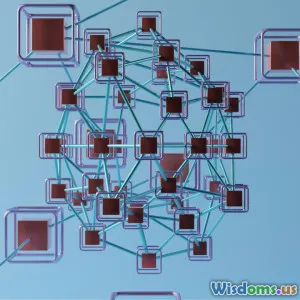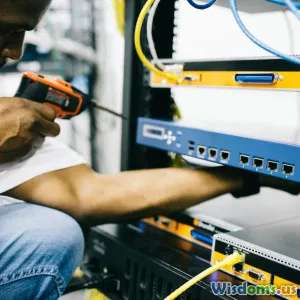
How Edge Computing Is Powering Real Time Analytics in Smart Cities
8 min read Discover how edge computing enables real-time analytics in smart cities, transforming urban life with faster, smarter decisions. (0 Reviews)
How Edge Computing Is Powering Real-Time Analytics in Smart Cities
Introduction
Urban areas worldwide are rapidly transforming into smart cities, driven by an explosion of connected devices and data. From traffic lights and security cameras to environmental sensors and public transit systems, enormous volumes of data are generated every second. The challenge: how to analyze this data instantly to power timely, intelligent decisions that improve urban life. Enter edge computing — a paradigm shift that brings data processing closer to its source.
Unlike centralized cloud computing, which involves sending raw data to distant data centers, edge computing processes data locally on or near the devices themselves. This dramatically reduces latency and bandwidth consumption—making real-time analytics in smart cities not just feasible, but highly effective. In this article, we will explore the crucial role edge computing plays in powering real-time analytics in smart cities, supported by concrete examples and practical insights.
The Architecture of Edge Computing in Smart Cities
Edge computing decentralizes computing resources by relocating processing from centralized data centers to the "edge" of the network—right where the data is produced.
- Proximity to Data Source: Edge devices such as sensors, cameras, and micro data centers perform initial data processing onsite.
- Reduced Latency: Processing data locally minimizes transmission delays, facilitating real-time responses.
- Bandwidth Efficiency: Only summarized or relevant data is sent to the cloud, reducing network load.
This distributed architecture supports various applications in smart cities, from traffic signal optimization to emergency response systems.
Real-Time Analytics Enabled by Edge Computing
Traffic Management and Congestion Reduction
Traffic congestion costs global economies billions annually. Traditional solutions rely on periodic data uploads to central servers, resulting in delays that inhibit effective control.
With edge computing, roadside units and smart traffic cameras analyze traffic flows instantly. For instance, Barcelona deploys edge-powered traffic systems that detect vehicle queues and dynamically adjust traffic signals. This has led to a reported 20% reduction in congestion during peak hours. Data processed on-site allows the city to proactively manage traffic snarls and reduce idling emissions.
Public Safety Monitoring
Smart cities use millions of surveillance cameras and sensor networks. Streaming video and sensor data to cloud servers for analysis is bandwidth-intensive and slow for time-sensitive situations.
Edge computing devices integrated with AI algorithms perform immediate threat detection—such as identifying weapons or unusual crowd behavior—and alert relevant authorities within seconds. New York City’s recent pilot program equips 1,000 cameras with edge AI modules, reducing response time to critical events by 40%, according to their Department of Information Technology.
Environmental Monitoring and Air Quality Control
Urban air pollution is a persistent health hazard. Sensor networks generate continuous emissions data. Edge computing helps cities analyze this data in real time and trigger alerts or actions.
In Singapore, edge-enabled environmental sensors monitor air quality potency locally. The system can activate localized sprinklers or restrict vehicle access in pollution hotspots instantaneously, improving public health outcomes.
Key Benefits of Edge Computing in Smart Cities
Enhanced Speed and Responsiveness
Real-time analytics depends on low latency. Edge computing's local processing means data is analyzed in milliseconds, enabling timely adjustments to urban infrastructure, like turning traffic lights green for emergency vehicles instantly.
Scalability and Security
Managing smart city data centrally can cause bottlenecks and pose data privacy risks. Edge computing's decentralized nature distributes computing load and enhances data privacy by limiting the transmission of sensitive raw data.
Cost Reduction
Edge computing reduces data transfer costs and cloud resource expenses by processing and filtering data locally, avoiding unnecessary communication with centralized servers.
Challenges and Considerations
While promising, edge computing introduces challenges:
- Infrastructure Deployment: Installing and maintaining distributed edge nodes requires investment and skilled personnel.
- Interoperability: Devices from multiple vendors need standardized protocols for seamless integration.
- Security: Edge devices must be secured against cyber threats, as they could be entry points for attacks.
Addressing these challenges requires coordinated city planning and investment in worker training and technology standards.
The Future of Edge Computing in Smart Cities
The integration of 5G networks amplifies the potential of edge computing, promising near-instantaneous communication across devices. Emerging trends include AI-driven edge analytics becoming more sophisticated, augmented reality applications for urban planning, and predictive models that continuously optimize city operations.
Cities like Amsterdam and Seoul are leading pilots combining edge computing with IoT and AI to pioneer smart zones where real-time analytics orchestrate everything from energy use to parking availability.
Conclusion
Edge computing is no longer a futuristic concept but a practical technology reshaping the way smart cities function. By empowering real-time analytics at the network's edge, it enables cities to respond swiftly to dynamic situations—whether easing traffic jams, enhancing public safety, or improving air quality.
As urban populations grow, edge computing will be essential to managing the complexity and volume of data generated by smart city devices. This technological shift promises smarter, more sustainable, and more connected urban environments where data-driven decisions benefit civilians and local governments alike.
Smart cities embracing edge computing today are not just enhancing the quality of life—they are laying the groundwork for innovative, resilient cities of tomorrow.
References
- Barcelona Smart City Project Reports, 2022
- New York City Department of Information Technology Annual Review, 2023
- Singapore's Environmental Sensor Network Study, 2023
- McKinsey Global Institute, "The digitally-enabled public sector," 2021
- IEEE Smart Cities Conference Papers, 2023
Rate the Post
User Reviews
Popular Posts
















